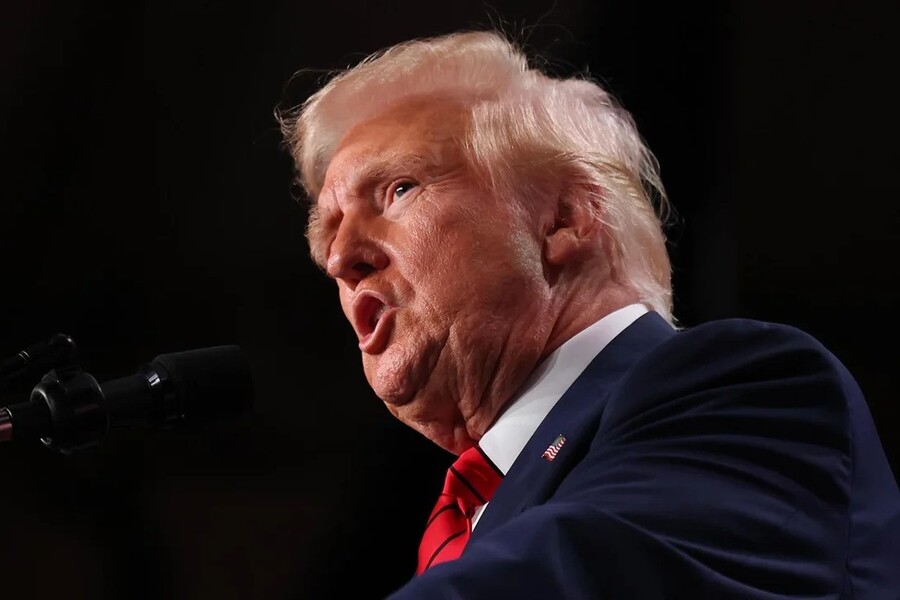As the 2025 Atlantic hurricane season approaches, sweeping changes inside the Federal Emergency Management Agency (FEMA) have sparked alarm and uncertainty among thousands of federal workers. In a dramatic restructuring effort, the Trump administration has introduced a new hiring process that requires the majority of FEMA’s workforce to seek contract renewals through the Department of Homeland Security (DHS), raising concerns of a quiet dismantling of the nation’s disaster response agency.
The changes were communicated in an internal FEMA email labeled “Hiring Update,” obtained by CBS News. The message, sent late Friday, directed thousands of employees to request extensions or contract renewals via DHS. This directive impacts FEMA’s Cadre of On-Call Response Employees (CORE) and its temporary reservist workforce—two groups that together comprise more than two-thirds of FEMA’s operational staff.
The update follows the recent firing of over 200 probationary FEMA workers and is viewed by some as a continuation of President Trump’s broader strategy to reduce the size of the federal government. Last month, the president signed an executive order directing the Department of Government Efficiency (DOGE) to begin large-scale workforce reductions, a move that many see as a direct threat to FEMA’s structure.
FEMA’s acting Administrator Cameron Hamilton reportedly briefed top leadership on the changes last week. In the days that followed, regional directors across the country informed staff during all-hands meetings, prompting widespread confusion, frustration, and early resignations.
“Employees have started to take their leave and go job hunting,” one current FEMA employee told CBS News. “They’ve seen the writing on the wall.”
FEMA’s CORE employees, who number over 8,800, represent 39% of the agency’s workforce and play a vital role in disaster response, particularly during hurricanes, wildfires, and other federally declared emergencies. Financed through the Disaster Relief Fund, they are often the first on the ground and continue working even during government shutdowns. Reservists—who number roughly 7,800—are also crucial, deploying to disaster areas as needed.
The email directed that employees with contract expiration dates after March 17 must submit formal renewal requests to DHS for review. External hiring is frozen until further notice, with the only exceptions being for political appointees and a small number of specialized positions.
The DHS defended the move, calling it an effort to “cut out wasteful spending and bureaucracy that slows down relief efforts.” A spokesperson told CBS News, “President Trump and Secretary [Kristi] Noem know that disaster recovery efforts are best led by state and local officials, not federal bureaucrats.”
President Trump has repeatedly criticized FEMA, labeling the agency costly and inefficient. While visiting fire-damaged communities in California earlier this year, he declared, “I say you don’t need FEMA, you need a good state government.” His administration’s recent executive order calls on states and localities to take a “more active and significant role” in emergency preparedness and response.
DHS Secretary Noem echoed the president’s stance, saying she supports efforts to “get rid of FEMA the way it exists today,” signaling a desire to reduce the federal footprint in disaster response.
The move is consistent with proposals under Project 2025—a policy roadmap promoted by conservative think tanks—which calls for shifting the majority of disaster preparedness and response responsibilities to states.
But current and former FEMA officials are warning that the changes could cripple the nation’s disaster response capacity. With hurricane season beginning June 1 and running through November 30, experts argue that the agency must be fully staffed and operationally ready to manage potentially devastating storms.
“If states aren’t ready, they better get ready,” a FEMA employee said. “It takes FEMA four months to refresh and restock all of our goods that get sent out for hurricane season. I can’t imagine the states are anywhere near staffed up enough or robust enough to handle this mission on their own.”
Former FEMA Administrator Deanne Criswell previously described disaster response in the U.S. as entering a “new normal,” citing a dramatic uptick in emergency declarations. Nearly 180 disasters were declared in the first 11 months of 2024—a 50% increase over the previous year.
Critics argue that by forcing FEMA employees to reapply for their positions and subjecting contract extensions to DHS review, the administration is effectively weakening the agency’s readiness and morale. They also fear that the hiring freeze will delay the onboarding of new workers needed to respond to natural disasters in the coming months.
The changes do not apply to all FEMA roles. Employees within the National Flood Insurance Program and those in specific specialist positions, including human resources, IT, and legal roles, are exempt from the hiring overhaul.
Nonetheless, the majority of FEMA’s operational response teams—those responsible for registering survivors for aid, distributing supplies, and assessing disaster damage—are now subject to the new approval process.
As the agency braces for what could be a busy hurricane season, employees say they’re unsure how long the current staffing model can hold.
“They’re dismantling FEMA piece by piece,” one source said. “And they’re doing it right before we need the agency the most.”
